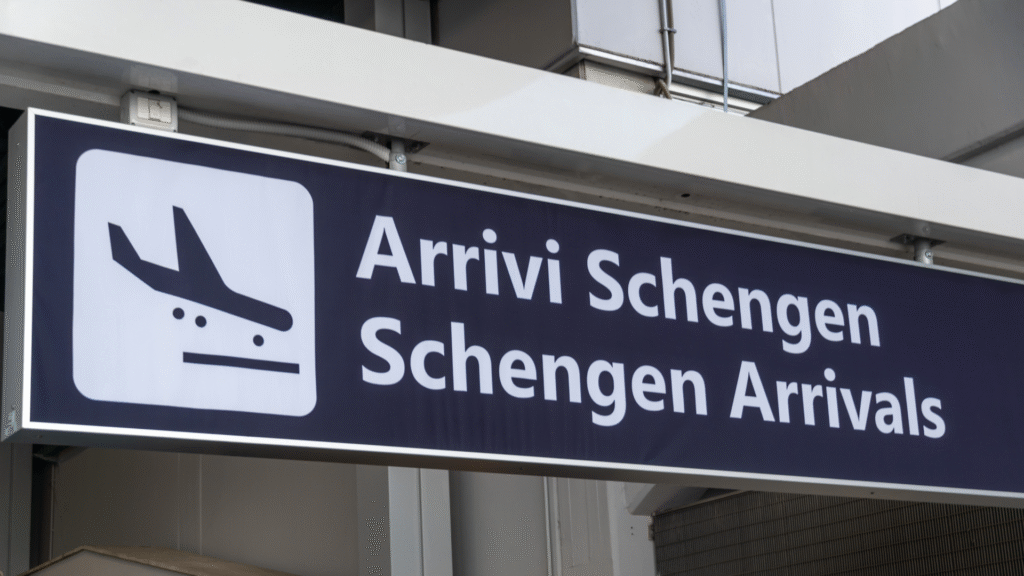Europe’s New Entry Rules Start October 2025: What to Know

Europe is modernizing how international travelers enter and leave its borders. Starting October 12, 2025, a new biometric system called the Entry/Exit System (EES) will go into effect across the Schengen Area.
Travelers will need to register facial and fingerprint data the first time they enter, and future entries will use these biometrics to verify identity.
The Entry/Exit System (EES) is a new digital tool that records:
- When travelers enter and leave the Schengen Area
- How long they stay
- If they overstay their allowed period
It replaces the old passport stamping method and stores:
- Your facial image
- Fingerprints
- Passport details
This information is saved securely for a limited time and helps with better border control, security, and faster processing in the future.
Who Is Affected?
Affected Travelers:
- Non-EU visitors coming from visa-free countries (like the USA, UK, Canada, Australia, etc.)
- Travelers entering for short stays (up to 90 days within any 180-day period)
- Anyone currently receiving passport stamps at EU borders
Not Affected:
- EU/EEA/Swiss citizens
- Travelers with residency permits or long-stay visas in a Schengen country
- Children under 12 may be exempt from fingerprinting
- Those crossing internal Schengen borders (traveling between Schengen countries)
Rollout Timeline
The EES will not start all at once. It will be introduced gradually over six months:
| Phase | Approximate Date | What Happens |
| Start | October 12, 2025 | One border point per country begins EES |
| Mid-Rollout | Late 2025 – Early 2026 | More border points adopt EES and process travelers |
| Full Deployment | By April 10, 2026 | All Schengen external borders use the system |
During the transition, some travelers may still get passport stamps.

What Travelers Must Do
- First Entry After October 12, 2025:
- Provide fingerprints and a photo
- Present your passport
- Answer standard entry questions
- On Future Visits (within 3 years):
- You may only need to provide a fingerprint or photo
- The system will match you to your earlier data
- The process should be faster
- Data Storage:
- Your data will be stored for up to 3 years
- It’s used only for border control and security
- Helps track overstays more accurately
Don’t Overstay
The rules remain the same:
- You can stay up to 90 days in any 180-day period
- If you overstay, you could face:
- Fines
- Detention
- Travel bans
The EES tracks entries and exits digitally, so border officers can easily see if you’ve overstayed.
Why Europe Is Making This Change
Europe is updating its border system to:
- Improve security and stop illegal overstays
- Use modern tech like facial recognition and eGates
- Create a unified process across all Schengen countries
- Speed up the entry process over time
The EES is also a first step toward ETIAS, an online travel permit launching in late 2026 for visa-exempt travelers.
Potential Challenges and Impacts
- Longer wait times during the early rollout
- Some border points may still be adjusting to the new tech
- Unclear instructions during the transition (passport stamp vs. EES)
- Privacy concerns around storing biometric data
- Border staff will need new training and equipment
Contact us if you are interested in Citizenship by Investment
Our expert advisors will have a 1-on-1 consultation to find the best solutions for you and your family and guide you through the procedure.
Share this blog
Frequently Asked Questions
Related Articles
Why Europe Keeps Losing Entrepreneurs to Global Opportunities
Europe continues to produce world-class talent, yet many entrepreneurs are choosing to build and scale their businesses beyond its borders….
Is Nauru’s Citizenship Program Still Worth It After the UK
The UK’s visa ban on Nauru passport holders is a clear message to investors: global mobility depends on trust, not…
Trump Gold Card: $1M U.S. Residency Open for Global Investors
The U.S. has launched the Trump Gold Card, a $1 million investor residency program offering fast-track access to U.S. residency…
The ROI Reality Behind Caribbean Citizenship Programs
Dominica’s Secret Bay is proving that Citizenship by Investment can deliver more than a second passport. With over US$5.4M in…
Saint Vincent to Launch Citizenship by Investment Program
Saint Vincent and the Grenadines is preparing to launch its first-ever Citizenship by Investment program, set for 2026. This planned…
Investment Programs To Look Out For In 2026
2026 is ushering in a new wave of citizenship and residency by investment programs aimed at high-net-worth individuals, business owners,…






